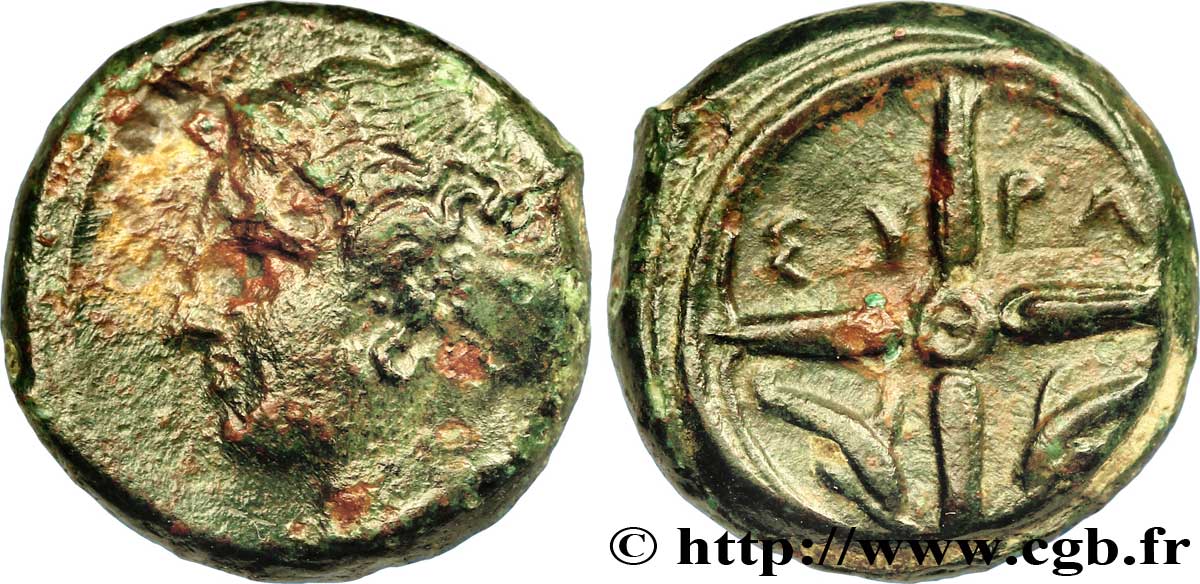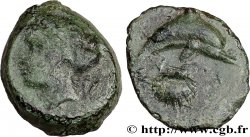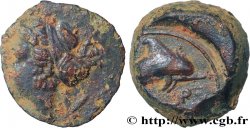v57_0034 - SICILY - SYRACUSE Hemilitron
MONNAIES 57 (2013)
Starting price : 125.00 €
Estimate : 200.00 €
unsold lot
Starting price : 125.00 €
Estimate : 200.00 €
unsold lot
Type : Hemilitron
Date: c. 415-405 AC.
Mint name / Town : Syracuse, Sicile
Metal : bronze
Diameter : 14,5 mm
Orientation dies : 12 h.
Weight : 3,45 g.
Rarity : R1
Coments on the condition:
Exemplaire sur un petit flan épais, bien centré avec un beau portrait. Revers de haut relief de style bien venu à la frappe. Patine superficielle verte avec de minuscules concrétions vertes et rouges.
Catalogue references :
Predigree :
Cet exemplaire provient de MONNAIES XXVI, n° 14
Obverse
Obverse legend : ANÉPIGRAPHE.
Obverse description : Tête d'Aréthuse à gauche, avec boucles d'oreille .
Reverse
Reverse description : Roue à quatre rayons avec moyeu central ; légende dans les deux cantons supérieurs et deux dauphins affrontés dans les deux cantons inférieurs.
Reverse legend : SU-RA.
Commentary
Ce type de bronze est contemporain des décadrachmes de Kimon et d’Évainète de Syracuse. Sur certains exemplaires, nous avons un dauphin derrière la tête d’Aréthuse, ici non visible. Certains exemplaires sont parfois signés (Eumenos, Eukleidas, Kimon ou Phrygillos).








 Report a mistake
Report a mistake Print the page
Print the page Share my selection
Share my selection Ask a question
Ask a question Consign / sell
Consign / sell
 Full data
Full data



